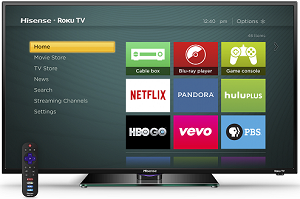
The new services are aimed at picking up the 10 million or so U.S. households that already pay for broadband Internet, but do not subscribe to pay-TV cable or satellite services. The COO of CBS Corp. (NYSE: CBS), Joseph Ianniello, said earlier this month that the company’s Showtime channels are not restricted by any existing contracts with pay-TV providers from “doing something direct to consumer.”
That “something” would be unbundling the Showtime network and offering it directly to consumers in much the same way that Netflix Inc. (NASDAQ: NFLX) or Hulu Plus currently operate. How much CBS would charge for that is not known, but to compete with Netflix and Hulu Plus the cost would have to be about $10 a month or less. That is a far cry from adding Showtime on top of a basic pay-TV package.
READ ALSO: Mobile Devices Drive Growth in Video Viewing
And CBS is not the only potential player. The CEO of Verizon Communications Inc. (NYSE: VZ) said last week that the company plans to offer OTT programming sometime during the first half of 2015. The telecom giant acquired Intel Corp.’s (NASDAQ: INTC) OnCue OTT service earlier this year after Intel gave up trying to reach agreement with content providers. Verizon may have a better chance at reaching a compromise with the content providers simply because they’re in the right place at the right time.
Sony Corp. (NYSE: SNE) and Viacom Inc. (NYSE: VIAB) announced an agreement last week that gives Sony the right to carry 22 Viacom networks when the Japanese company launches its OTT service. This is Viacom’s first such deal and, according to the press announcement, “the partnership unites Sony’s rapidly growing network and more than 75 million Internet-enabled Sony devices in U.S. living rooms with Viacom’s content portfolio…” Sony has not yet said how much the service will cost.
AT&T Inc. (NYSE: T) has what may be the most ambitious plan of all. Once the company’s proposed acquisition of DirecTV (NASDAQ: DTV) is completed, AT&T expects to bundle the satellite pay-TV service with a fixed wireless broadband service primarily to attract rural households. The company could deliver data speeds of at least 15 Mbps to rural subscribers, who are lucky to get half that now.
Does all this activity presage a price war? A lot depends on how far content providers are willing to drop prices to corral the 10 million broadband subscribers who don’t pay for cable or satellite TV today. This movement may inevitably lead to something the content providers have resisted for years — a la carte pricing.
The cable companies will not give up their lucrative quasi-monopolies without a struggle unless, like Comcast Corp. (NASDAQ: CMCSA), they also provide broadband Internet service and own their own networks.
READ ALSO: J.P. Morgan’s 4 Top Telecom and Tower Stocks to Buy for September
Credit card companies are handing out rewards and benefits to win the best customers. A good cash back card can be worth thousands of dollars a year in free money, not to mention other perks like travel, insurance, and access to fancy lounges. See our top picks for the best credit cards today. You won’t want to miss some of these offers.
Flywheel Publishing has partnered with CardRatings for our coverage of credit card products. Flywheel Publishing and CardRatings may receive a commission from card issuers.
Thank you for reading! Have some feedback for us?
Contact the 24/7 Wall St. editorial team.
